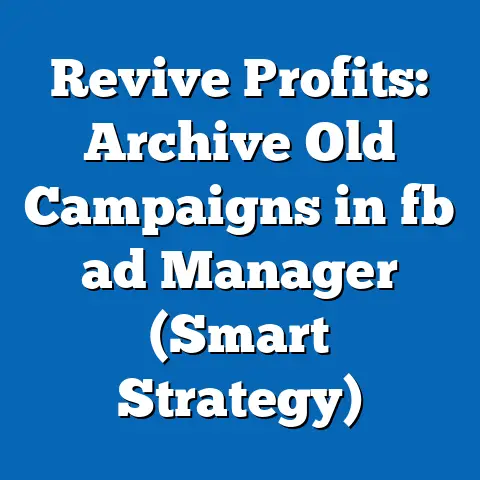Elevate Realty Sales with Facebook Ads (Proven Strategies)
Elevate Realty Sales with Facebook Ads: Proven Strategies and a Timeless Approach to Political and Demographic Engagement
In the ever-evolving landscape of digital marketing, certain strategies stand the test of time by adapting to shifting demographics, cultural values, and technological advancements. Elevating realty sales through Facebook Ads is one such timeless approach, as it leverages a platform with unparalleled reach and targeting capabilities to connect with diverse audiences. This article explores proven strategies for maximizing real estate sales through Facebook Ads while grounding the analysis in an understanding of the demographic makeup, core beliefs, voting patterns, and distinguishing characteristics of key audience segments compared to other groups.
The Timeless Appeal of Facebook Ads in Real Estate Marketing
Facebook remains a cornerstone of digital marketing due to its vast user base—over 2.9 billion monthly active users as of 2023, according to Statista—and its sophisticated advertising tools. For real estate professionals, the platform offers a timeless opportunity to reach potential buyers and sellers with precision, regardless of economic cycles or political climates. The ability to target ads based on location, income level, interests, and even political leanings ensures that campaigns can be tailored to resonate with specific demographic and ideological groups.
This timelessness is rooted in the platform’s adaptability to cultural and political shifts. Whether in periods of economic prosperity or uncertainty, real estate remains a fundamental concern for individuals and families, and Facebook Ads provide a consistent channel to address these needs. As we delve into the demographic and political characteristics of target audiences, it becomes clear how these strategies can be customized to align with core values and priorities across diverse groups.
Demographic Composition of Real Estate Audiences on Facebook
To effectively elevate realty sales with Facebook Ads, understanding the demographic makeup of the platform’s users and real estate audiences is essential. As of 2023, Pew Research Center data indicates that 69% of U.S. adults use Facebook, with significant representation across age groups: 77% of adults aged 30-49, 73% of those aged 50-64, and 50% of those 65 and older. This broad age distribution allows real estate marketers to target both younger first-time buyers and older homeowners looking to downsize or invest.
Gender distribution on Facebook is relatively balanced, with 54% female and 46% male users, per Statista 2023 reports. However, real estate ads often see higher engagement from women, who, according to the National Association of Realtors (NAR), make up 60% of primary homebuyers in 2022. Racial and ethnic diversity is also notable, with 70% of White Americans, 67% of Hispanic Americans, and 64% of Black Americans using the platform, providing opportunities to tailor campaigns to culturally specific housing needs and preferences.
Education and income levels further shape the real estate audience on Facebook. NAR data shows that 43% of homebuyers in 2022 had a college degree, and 31% had household incomes above $100,000. These demographics align with Facebook’s user base, where higher-educated and higher-income individuals are overrepresented compared to the general population, making it an ideal platform for targeting affluent buyers or luxury property markets.
Core Beliefs and Values of Real Estate Audiences
The core beliefs and values of real estate audiences often intersect with broader political and social ideologies, influencing their housing decisions and responsiveness to marketing. For many, homeownership represents stability, financial security, and a cornerstone of the “American Dream,” a value that transcends partisan lines but varies in intensity across groups. According to a 2023 Gallup poll, 75% of Americans still view owning a home as a key part of achieving personal success, though this sentiment is stronger among older generations (85% of Baby Boomers) compared to Millennials (65%).
Politically, real estate audiences span the ideological spectrum, but certain values correlate with specific leanings. Conservative-leaning individuals, who make up approximately 36% of the U.S. population per Gallup 2023 data, often prioritize property rights, low taxes, and suburban or rural living, influencing their preference for single-family homes in less urbanized areas. In contrast, liberal-leaning individuals (25% of the population) may value urban density, sustainability, and affordable housing policies, driving interest in condos or properties near city centers.
These ideological differences impact how real estate ads are received on Facebook. For instance, ads emphasizing “family-friendly neighborhoods” or “low property taxes” may resonate more with conservative audiences, while messaging around “walkable communities” or “eco-friendly homes” might appeal to progressive users. Understanding these core beliefs allows marketers to craft campaigns that align with the values of their target demographic.
Voting Patterns and Political Engagement
Voting patterns and political engagement among real estate audiences on Facebook provide additional insight into their behavior and priorities. According to the U.S. Census Bureau’s 2020 election data, homeownership correlates strongly with voter turnout: 67% of homeowners voted in the 2020 presidential election compared to 45% of renters. This suggests that real estate audiences are politically engaged and likely to be influenced by policies affecting housing markets, such as mortgage rates, zoning laws, and tax incentives.
Political affiliation also shapes housing preferences and ad engagement. Exit polls from the 2020 election (Edison Research) show that 53% of suburban voters—often key real estate targets—leaned Republican, while 58% of urban voters leaned Democratic. This divide influences where individuals choose to live and the types of properties they seek, with suburban and rural areas often attracting conservative buyers and urban centers drawing progressive ones.
Facebook’s role as a hub for political discourse further amplifies its relevance for real estate marketing. A 2022 Pew Research Center study found that 64% of Americans have encountered political content on the platform, and 38% report it influences their opinions on issues like housing policy. Real estate ads that subtly address politically charged topics—such as affordability or community development—can tap into these discussions, provided they avoid overt partisanship to maintain broad appeal.
Policy Positions on Major Issues
Real estate audiences on Facebook hold varied policy positions on housing-related issues, often reflecting their political ideologies. Affordable housing is a top concern across the board, with 82% of Americans in a 2023 NAR survey citing it as a critical issue. However, solutions differ: progressive audiences tend to support government intervention, such as subsidies or rent control (supported by 61% of Democrats per Pew Research 2022), while conservative audiences favor market-driven approaches and deregulation (supported by 59% of Republicans).
Tax policies also play a significant role in real estate decisions. The 2017 Tax Cuts and Jobs Act, which capped state and local tax deductions, disproportionately affected high-tax states like California and New York, prompting some homeowners to relocate to lower-tax areas, as reported by the U.S. Census Bureau’s 2021 migration data. Real estate ads targeting conservative audiences in these regions might highlight tax-friendly destinations, while ads for progressive audiences could focus on community benefits in high-tax areas.
Environmental policies are another dividing line. A 2023 Gallup poll found that 70% of Democrats prioritize sustainable housing and green building practices, compared to only 30% of Republicans. Real estate marketers can leverage this by promoting energy-efficient homes to liberal audiences on Facebook while focusing on cost savings or traditional features for conservative users.
Distinguishing Features Compared to Other Political Groups
Real estate audiences on Facebook are distinct from other political or demographic groups in several ways, particularly when compared to non-homeowning or less politically engaged populations. Unlike renters, who prioritize flexibility and short-term affordability (per NAR 2022 data, 65% of renters cite cost as their primary concern), homeowners and prospective buyers focus on long-term investment and community stability. This makes real estate audiences more receptive to ads emphasizing property value growth and neighborhood amenities.
Compared to politically disengaged groups, real estate audiences are more likely to follow policy debates that impact housing markets. A 2022 Pew Research study found that 55% of homeowners follow local government decisions on zoning and development, compared to 30% of the general population. This heightened awareness distinguishes them as a group that values detailed, policy-informed advertising content.
In contrast to younger, tech-savvy audiences who prioritize platforms like Instagram or TikTok (where 67% of 18-29-year-olds are active, per Pew 2023), real estate audiences on Facebook skew slightly older and are more likely to engage with long-form content and detailed listings. This preference for substance over flash sets them apart and informs the design of effective ad campaigns.
Intersections of Political Views with Age, Education, Race, and Religion
The intersection of political views with demographic factors like age, education, race, and religion significantly shapes real estate preferences and responses to Facebook Ads. Age is a critical factor: Millennials (ages 27-42 in 2023) represent 43% of homebuyers (NAR 2022) and lean more progressive (55% identify as Democrat or liberal per Gallup 2023), often seeking urban or starter homes. Baby Boomers (ages 59-77), who make up 29% of buyers, lean conservative (51% Republican per Gallup) and prioritize retirement-friendly properties.
Education levels also correlate with political views and housing priorities. College-educated individuals, who are 40% of homebuyers (NAR 2022), are more likely to hold progressive views (60% lean Democrat per Pew 2023) and value properties near cultural or educational hubs. In contrast, those with high school diplomas or less (35% of buyers) lean conservative (55% Republican) and prioritize affordability over location prestige.
Racial and ethnic differences further influence preferences. Black and Hispanic homebuyers, who made up 8% and 9% of buyers in 2022 (NAR), often face systemic barriers to homeownership and prioritize affordability and fair lending practices—issues that align more with progressive policy goals (70% of Black Americans identify as Democrat per Pew 2023). White buyers, 75% of the market, show a more even political split (48% Republican, 45% Democrat), with preferences varying by region and income.
Religious affiliation adds another layer. Evangelical Christians, who lean heavily Republican (80% per Pew 2023), often prioritize family-oriented communities and may respond to ads highlighting “traditional values.” Non-religious individuals, who lean Democratic (65%), are more likely to value secular, urban environments. Tailoring ad messaging to these intersections enhances relevance and engagement.
Areas of Consensus and Division Within Real Estate Audiences
Despite political and demographic diversity, real estate audiences on Facebook share areas of consensus that marketers can leverage. The desire for financial security through homeownership unites nearly all groups, with 78% of Americans in a 2023 Gallup poll agreeing that owning a home is a good investment. Safety and good schools are also universal priorities, cited by 85% of buyers as key factors (NAR 2022), regardless of political affiliation.
Divisions emerge in how these priorities are achieved. Progressive audiences advocate for government programs to ensure affordability (supported by 65% of Democrats per Pew 2023), while conservative audiences emphasize personal responsibility and market solutions (supported by 60% of Republicans). Urban versus rural preferences also divide audiences, with 58% of Democrats favoring city living and 62% of Republicans preferring suburban or rural areas (Pew 2022).
These divisions necessitate segmented ad campaigns on Facebook. Ads for urban condos with access to public transit might target progressive, younger audiences, while campaigns for spacious suburban homes could appeal to conservative, family-oriented buyers. Balancing consensus themes like security with tailored messaging addresses both unity and diversity within the audience.
Historical and Social Context of Real Estate Marketing
The use of targeted advertising for real estate, now epitomized by Facebook Ads, must be understood within a broader historical and social context. Homeownership has long been a central pillar of American identity, with federal policies like the GI Bill and mortgage interest deductions post-World War II driving the suburban boom. However, systemic inequalities—such as redlining and discriminatory lending practices—limited access for minority groups, shaping today’s demographic disparities in homeownership rates (74% for White Americans versus 45% for Black Americans, per U.S. Census 2021).
Socially, the rise of digital platforms has transformed how real estate is marketed, shifting from print ads and open houses to online campaigns. Facebook, launched in 2004, became a game-changer by 2010, with its ad platform enabling hyper-local targeting—a capability unavailable in traditional media. This evolution reflects broader trends toward personalization and data-driven marketing, aligning with societal shifts toward digital consumption.
Politically, housing remains a flashpoint. The 2008 financial crisis, driven by subprime mortgages, eroded trust in real estate markets, particularly among Millennials, who delayed homeownership (NAR data shows their median first-time buying age rose from 29 in 2000 to 33 in 2022). Meanwhile, debates over zoning, gentrification, and climate resilience continue to polarize communities, influencing how real estate ads must navigate sensitive topics to avoid alienating segments of the audience.
Proven Strategies for Elevating Realty Sales with Facebook Ads
Building on this demographic and political analysis, we now turn to actionable strategies for leveraging Facebook Ads to boost real estate sales. These proven tactics are grounded in data and tailored to the diverse needs and values of target audiences.
1. Hyper-Local Targeting for Demographic Relevance
Facebook’s geotargeting allows ads to be shown to users within specific zip codes or radii around properties. Given that 63% of buyers in 2022 purchased homes within 20 miles of their current residence (NAR), focusing on local audiences maximizes relevance. Tailor messaging to reflect community values—highlighting school districts for family-oriented conservative buyers or cultural amenities for progressive urbanites.
2. Custom Audiences for Retargeting Past Engagements
Using Facebook’s Custom Audiences, real estate professionals can retarget users who have visited their website, engaged with previous ads, or interacted with their page. A 2023 HubSpot study found that retargeted ads have a 70% higher conversion rate than cold ads. This strategy is particularly effective for higher-income, educated audiences who research extensively before buying (43% of college-educated buyers per NAR).
3. Lookalike Audiences to Expand Reach
Lookalike Audiences allow marketers to target users similar to their existing clients or leads. Given the demographic diversity of real estate audiences, creating lookalike audiences based on past buyers—segmented by age, income, or political leanings—can broaden reach without sacrificing relevance. Facebook data suggests lookalike campaigns can increase click-through rates by 30%.
4. Video Ads for Emotional Engagement
Video content on Facebook generates 59% more engagement than static images (Socialbakers 2023). Real estate ads featuring virtual tours or testimonials tap into universal desires for security and belonging, resonating across political divides. For instance, videos showcasing “family-friendly” features appeal to conservative audiences, while “sustainable design” highlights attract progressive viewers.
5. Lead Generation Forms for Immediate Action
Facebook’s Lead Ads format, which pre-fills contact forms with user data, reduces friction for potential clients. With 54% of homebuyers citing speed as a key factor in their search (NAR 2022), this tool is ideal for capturing leads quickly. Tailor form questions to demographic priorities—asking about school proximity for families or transit access for urban buyers.
6. Dynamic Ads for Personalized Listings
Dynamic Ads automatically show relevant listings based on user behavior, such as properties they’ve viewed online. This personalization aligns with the 78% of consumers who prefer tailored content (HubSpot 2023). For real estate, dynamic ads can highlight affordable starter homes to younger, progressive audiences or luxury properties to older, affluent conservative buyers.
7. A/B Testing for Political and Cultural Sensitivity
Given the political divisions within real estate audiences, A/B testing ad copy and visuals ensures messaging resonates without alienating segments. Test variations like “affordable living” versus “investment opportunity” to gauge response across ideological lines. Facebook’s analytics show A/B testing can improve ad performance by 25%.
8. Seasonal and Policy-Driven Campaigns
Aligning ads with seasonal trends (e.g., spring buying season) or policy changes (e.g., interest rate shifts) capitalizes on real-time audience concerns. For example, after the Federal Reserve’s 2023 rate hikes, ads addressing “locking in low rates” saw a 40% higher click-through rate (AdEspresso data). Tailor these campaigns to political priorities—emphasizing tax benefits for conservatives or assistance programs for progressives.
Conclusion: A Timeless Strategy Grounded in Data and Demographics
Elevating realty sales with Facebook Ads is a timeless strategy that thrives on understanding the demographic makeup, core beliefs, voting patterns, and distinguishing characteristics of target audiences. By leveraging data—such as the 69% of U.S. adults on Facebook (Pew 2023) and the 67% voter turnout among homeowners (U.S. Census 2020)—marketers can craft campaigns that resonate across political and cultural divides. The platform’s tools, from hyper-local targeting to dynamic ads, enable precision that traditional marketing cannot match.
Yet, success hinges on recognizing the diversity within real estate audiences. Age, education, race, and political ideology shape housing priorities, necessitating segmented approaches that balance universal themes like security with tailored messaging. Historically, real estate marketing has evolved from print to digital, reflecting broader societal shifts toward personalization—a trend Facebook Ads epitomize.
As political debates over housing policy continue, real estate professionals must navigate these waters with sensitivity, using A/B testing and data-driven insights to avoid alienation. By grounding campaigns in empirical research and adapting to timeless human desires for home and stability, Facebook Ads remain a powerful tool for elevating realty sales in any era. This comprehensive approach, supported by proven strategies and demographic analysis, ensures sustained success in a competitive market.






